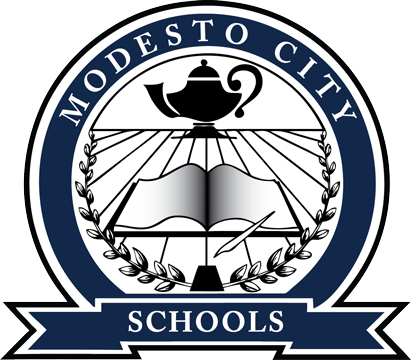As the autumn leaves change, schools across Modesto are gearing up for Native American Heritage Month, a time to honor the histories, cultures, and contributions of Indigenous communities. For Native students and staff, it’s an opportunity to reflect, connect, and educate others.
Isaiah Batt, a senior at Grace Davis High School, is a proud member of the Yurok tribe originally from the lower Klamath River in Northern California. He describes his heritage as a source of uniqueness, connecting him to those who came before him.
“Being Native American has been completely normal and fun for me,” he said, adding that his friends treat him no differently because of his background. “If anything, I think I’ve enjoyed it, and I will take pride in it.”
Although Isaiah’s connection to specific traditions is limited, he’s drawn to the patterns created by his Yurok ancestors, some of which he glimpsed in museums. His fascination with these symbols speaks to a desire among young Native Americans: to understand and reclaim the richness of their cultural identities.


Gilbert Blue Feather Rosas, director of sustainability and adaptation for Modesto City Schools, feels that Native American Heritage Month offers a moment to reflect on “a simpler way of life lived in harmony with the land.”
For him, it’s an opportunity to honor his Cahuilla heritage, a tribe rooted in what is now southern California, where desert plains and rugged canyons lie south of the San Bernardino and San Jacinto mountains.
“Native Americans were the first sustainability managers,” he explained. “They took only what they needed and treated the land with respect.”
Growing up on a farm with his grandparents, Gilbert recalls learning invaluable lessons about the land. His grandfather taught him to fish, farm, and hunt, and these skills instilled a deep reverence for nature, a value that now influences his professional life as a sustainability director.
“My heritage has led me toward a career in sustainability and good stewardship,” he shared.


Retired Davis High School employee George Sawyer, known as “Cha da” (a Kiowa name meaning “one who eats a lot,” given to him by his grandmother), reflects on growing up connected to his culture in Oklahoma. Raised on his grandmother’s farm without modern conveniences like running water or electricity, George feels a powerful tie to his roots.
“My grandmother was on the reservation at the same time as Geronimo. She was a little girl, and he was an old warrior,” George reflected. “How many people can say that? Not too many.”
The Kiowa, a warrior tribe with a rich history, taught George the “old ways” of hunting and fishing. Passing these skills on to his own son and grandchild was a profound experience for him.
“What good is all that knowledge if you can’t spread it?” he emphasized, embodying the importance of cultural transmission.
To George, Native American Heritage Month is also a time to acknowledge the resilience of Native cultures, even as he sees his tribe as “a dying breed.” He cherishes returning to Oklahoma, where powwows, drums, and teepees rekindle his sense of belonging.
“When I hear the music, I truly know I am home, because you don’t get that out here in California,” he added.

Learning From Each Other and Moving Forward Together
Native American Heritage Month is a time to remember, to listen, and to learn, honoring both individual and collective journeys. George’s advice— “never give up”—resonates as a call to action for all. His words remind us that when we uplift each other’s histories, we build a foundation for mutual respect and understanding.
As Isaiah shared, learning about Native culture gives students “a glimpse of how life used to be in America.” It is a gift, a lesson in resilience and respect, and one that serves as a guiding light for generations to come.

